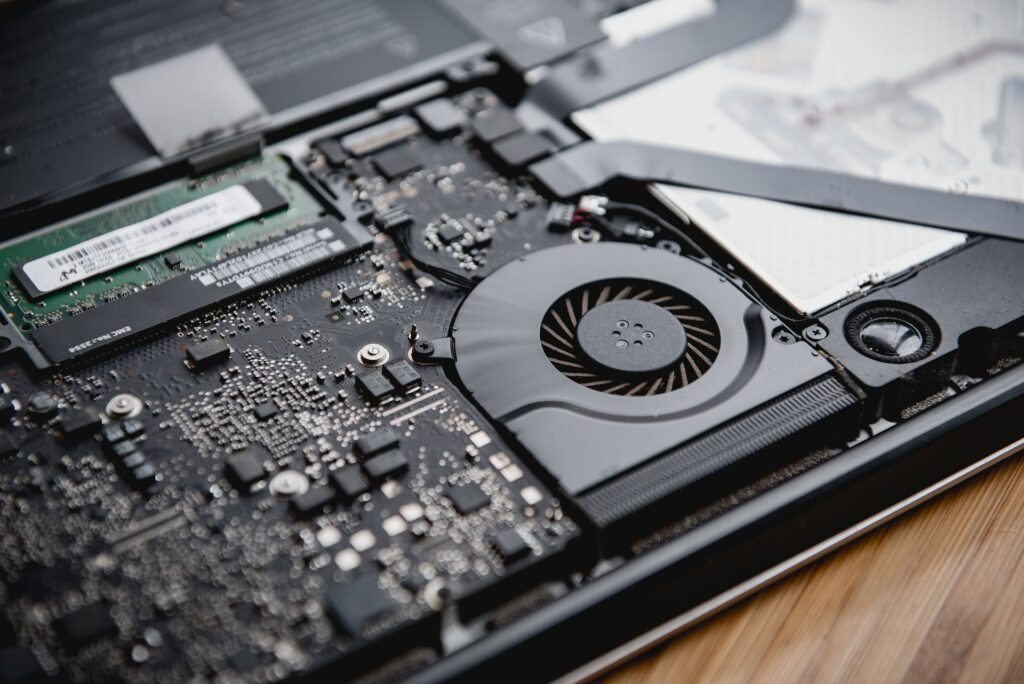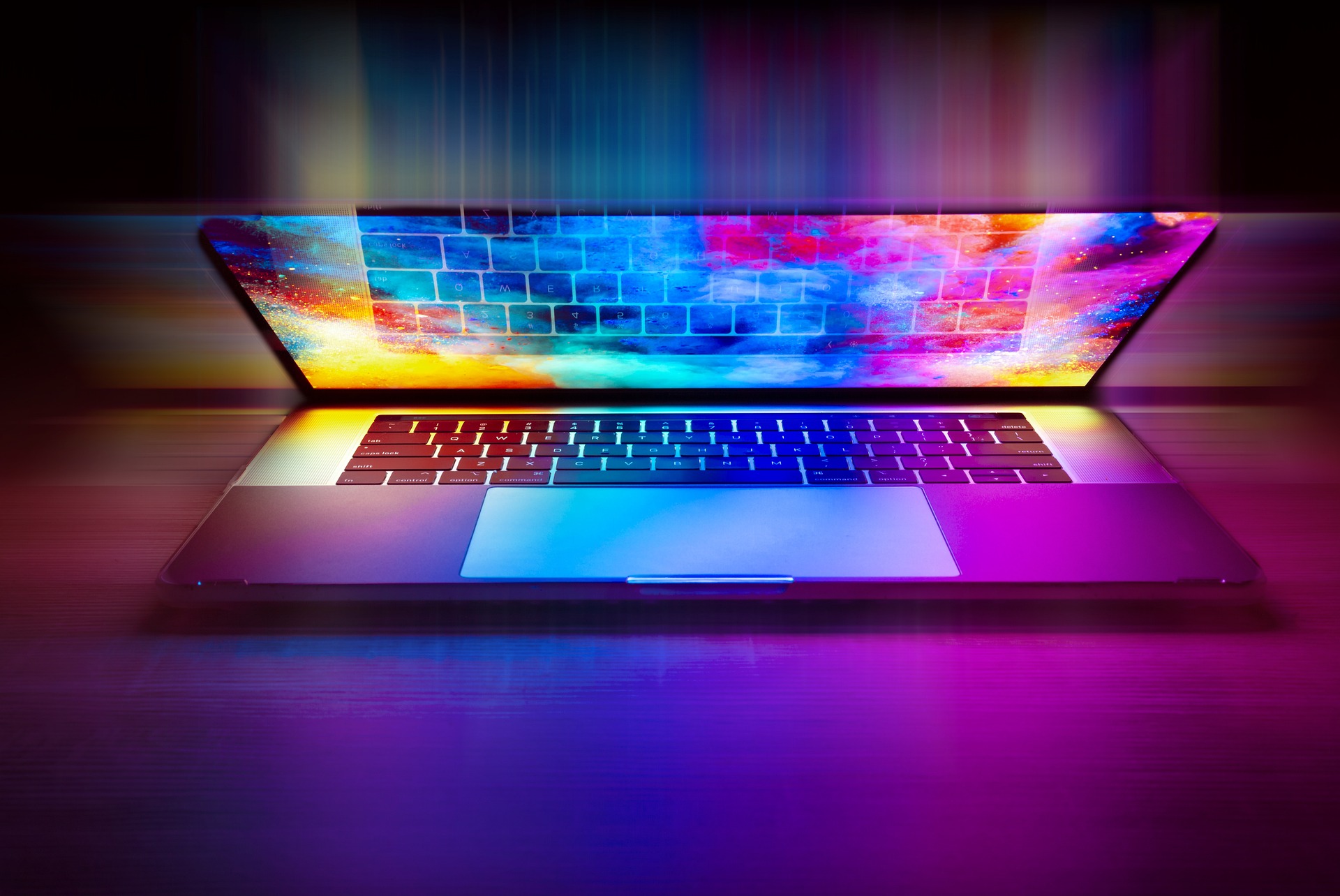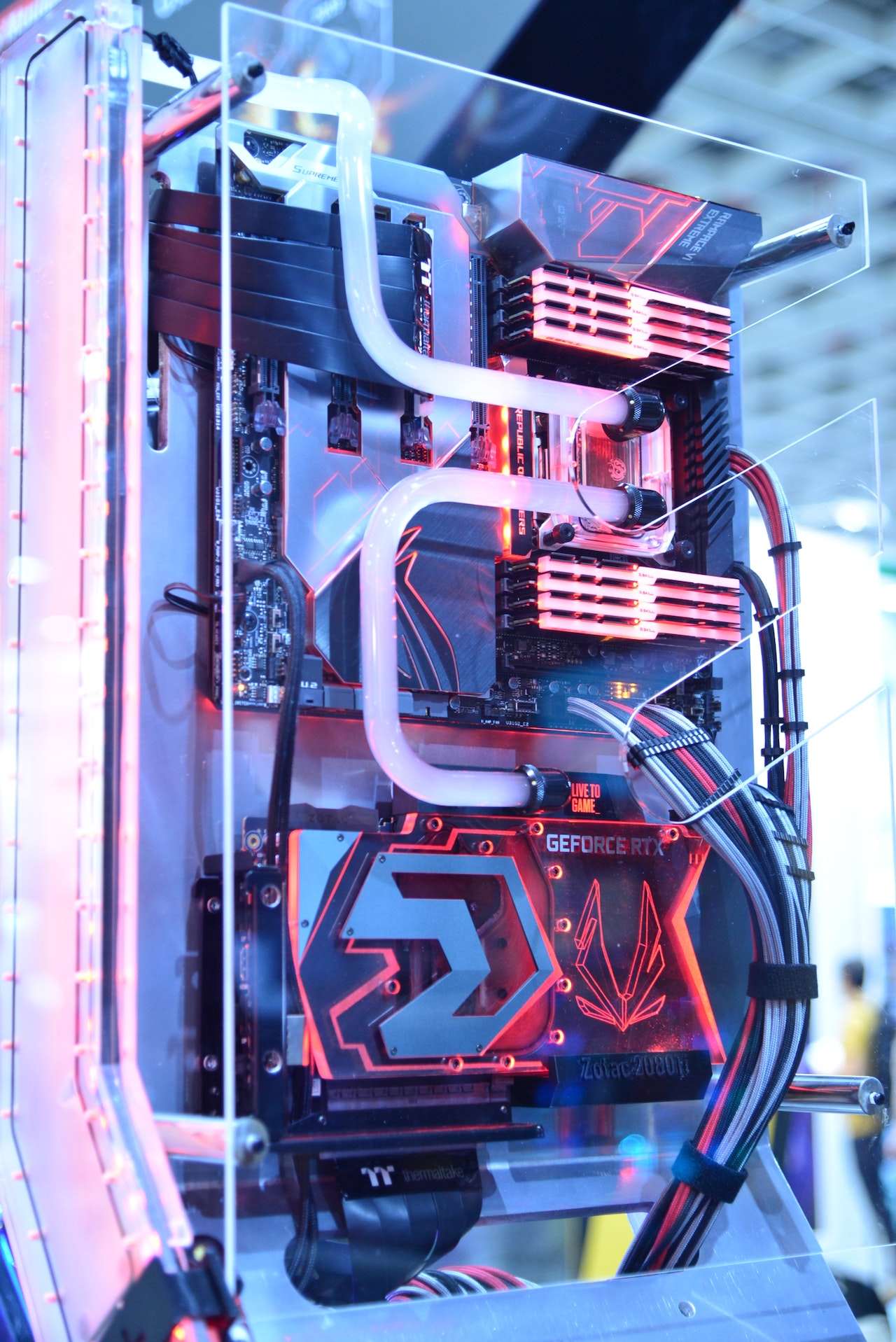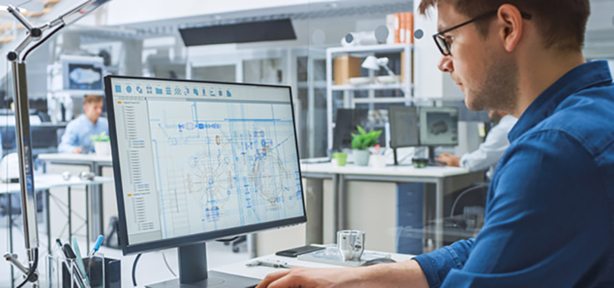An overheating laptop is quite a problem. It can happen more often during summer months and can cause a lot of pain. The symptoms are easy to recognise, as there are clear signs, but the more tricky question seems to be: why is this happening?
To understand the problem, you first need to know the source of the heat. Of all the components in a laptop, the processor (CPU) and the video chip (GPU, VGA) are the ones that generate the most heat. Both components have their own cooling to keep the heat generated from their operation at an appropriate level. One of the most common causes of overheating is a failure of the cooling system (e.g. the laptop fan won’t start) or a blockage in the laptop’s vents.
A clogged cooling system is a more common problem than you might think. Airborne dust, invisible to the naked eye, can settle unnoticed everywhere. Your machine’s cooling system is no exception. Over time, the many tiny particles build up into a thin layer and create an extra layer of insulation that prevents warm air from escaping unhindered.
There are, of course, factors that can exacerbate the situation. Incorrect use of the laptop, for example. What counts? For example, a computer kept in bed on your lap. This is because lint from bed linen, bedspreads or even clothing can get into the cooling system just like dust mites. Textiles can also obstruct airflow, further reducing the efficiency of the cooling system.
Normal laptop temperature
The first step is to find out the ideal operating temperature for a laptop used for general tasks. In general, the optimal operating temperature for a laptop is between 86-158 °F (30-70 °C). Around 158 °F (70 °C) is the limit above which something could be a problem.

If the laptop gets too hot, its operation slows down noticeably, and in serious cases it will shut down automatically. Usually, around 212 °F (100 °C), the performance of the machine is significantly reduced. The reduction in laptop speed and the shutdown is a kind of self-protection mechanism to protect the user and the device from serious damage.
You have probably experienced that your laptop occasionally overheats. This is more common with cheaper, plastic laptops and can easily damage the device if not properly monitored.
What can be done about overheating
If the air is too hot and the laptop fan is too loud, you can rightfully suspect that something is wrong. No need to wait until things get worse. Save your work, turn off the laptop and check the cooling system. If you don’t have the necessary knowledge, the best thing to do is to get a professional to check the system. Overheating your laptop can be easily prevented with a little care and doesn’t require much effort. Regular dusting and learning how to use your laptop correctly can go a long way.
- Use a laptop cooler.
- Clean your laptop of the accumulating dust at the very least annually.
- Monitor the temperature of your laptop. Speccy or Mac Fan Control programs are excellent for this.
- If possible, choose a business laptop with an advanced cooling system. Business class laptops have very efficient cooling.
- Pay attention to the ambient temperature. Ideally, use the device in temps below 95 °F (35 °C).
- Place the laptop on a solid surface to ensure unobstructed airflow.
- Avoid blocking the vent. For example, use it cautiously in bed, on a blanket. Better don’t use it like that at all.
- Do not use it near a heater, and make sure it is not exposed to direct sunlight.
As part of prevention, it doesn’t matter which machine you choose. Business laptops may seem expensive at first glance, compared with, say, simpler variants, but they offer a number of benefits. What is particularly relevant here is that they are easy to dismantle and clean, and have a particularly advanced cooling system. In other words, they only appear to be expensive to buy. In reality, you can save many times your expenditure over years of trouble-free use. Because these laptops can give you years of loyal service.
Loud laptop fan
Blowing hot air is a telltale sign, but it’s not always a terrible sign. In the summer, in the sizzling 100 °F (38 °C) degrees, it’s perfectly normal for the machine to switch to increased cooling. Just think how much energy it takes to maintain the optimum temperature when it’s summer outside. So it’s always worth checking the conditions, because it may be that the hot air is being blown out simply because the ambient temperature is significantly higher than usual.

It could also be that a program or application running in the background is putting a lot of strain on the processor (CPU), so it needs more cooling due to the increased power, and the fan is spinning at a higher speed. It’s a good idea to check the list of programs running in the background, as it’s possible that an unwanted program is causing the problem.
Passive cooling
Nowadays, more and more laptops have so-called passive cooling. This means that the fan is completely omitted and instead cooling is done passively using heat sinks. The main advantage of this is that it keeps the laptop completely silent and leaves more space for the battery, for example. The disadvantage, however, is that it cannot be used with more powerful processors. In practice, this means that both the speed and performance of the machine suffer from passive cooling. It is important to note that these laptops are perfectly suitable for general use.
Another advantage is that laptops with passive cooling rarely overheat. Of course, there are exceptional situations where only a slight drop in performance is noticeable.
Routine laptop maintenance at home
You can do a lot for the health of your laptop and easily prolong its life by carrying out the obligatory maintenance tasks at regular intervals. First and foremost, have your laptop’s cooling system cleaned annually and check the coolant on the processor.
If you don’t know how to take your property apart, if you’re unsure about how to put it back together, and you’ve never done cleaning before, it may not be a good idea to try right now. For one thing, it’s easy to damage the device, which is then much more difficult to fix than to clean. On the other hand, unexpected developments can thoroughly thwart any good results. And you could find yourself standing over your laptop’s shattered pieces. Thirdly, cleaning is a specialized task that requires expertise and experience. And although there are actually quite useful guides on the internet on the subject, experimentation in this area is still not a worthwhile tactic, because it can lead to troubles.
It’s also worth checking the laptop’s accessories. Power cable, battery, the operating system settings and all the installed programs should also be checked every once in a while.
Conclusion
Potential causes of heating in your device may not be limited to the listed above. In case you can’t figure out what’s wrong yourself, take it to experts. Whatever is causing troubles, visiting a technician won’t be a bad idea. If your laptop needs to be repaired, you can count on pros in the Smart Addiction team.
In terms of what you definitely can do yourself, don’t overload your device with software too heavy for it, and have a reliable antivirus installed. Prevent damage to your laptop whenever possible – this way you will secure the most positive outcome.
Image by Joshua Woroniecki from Pixabay



